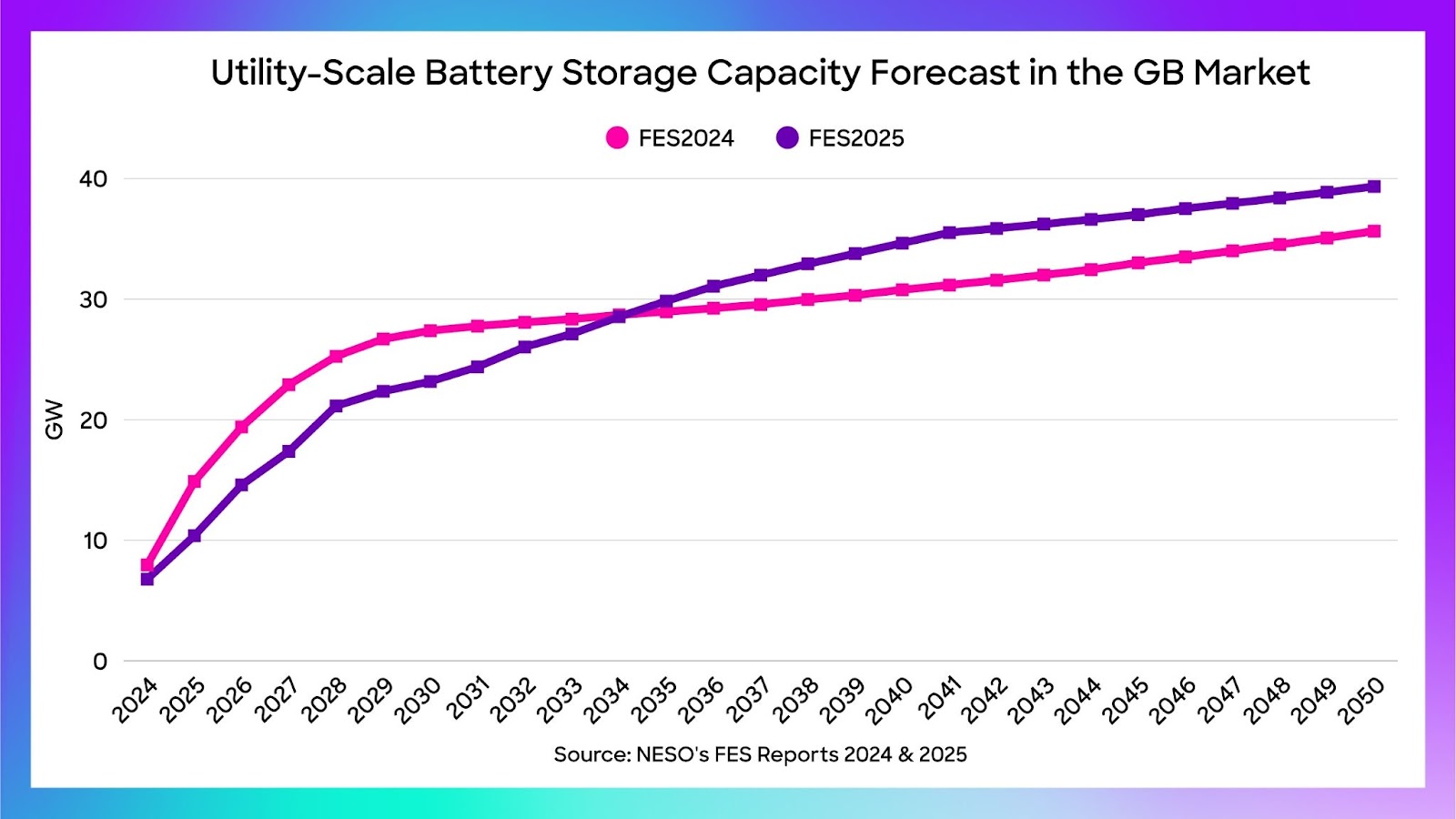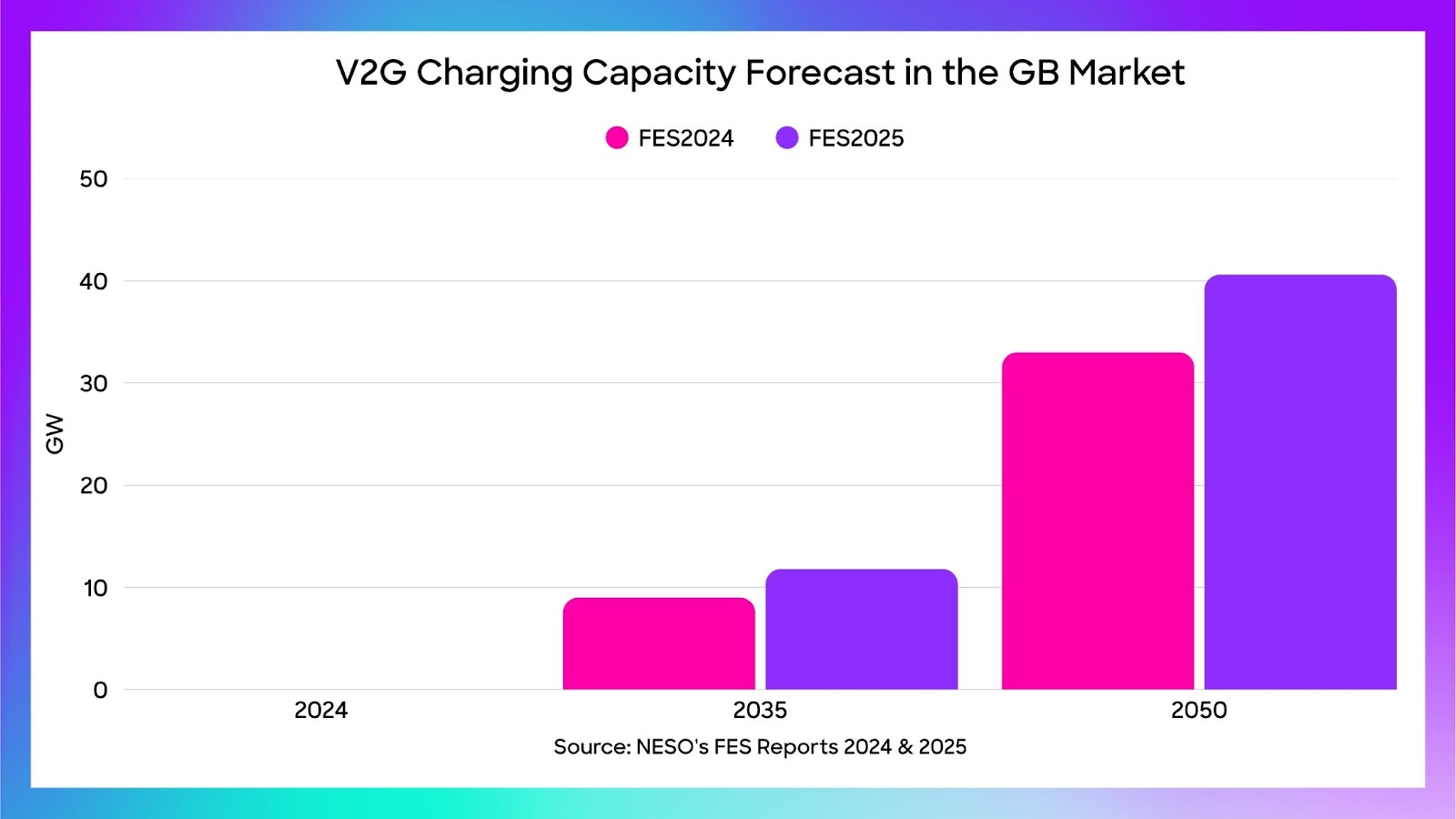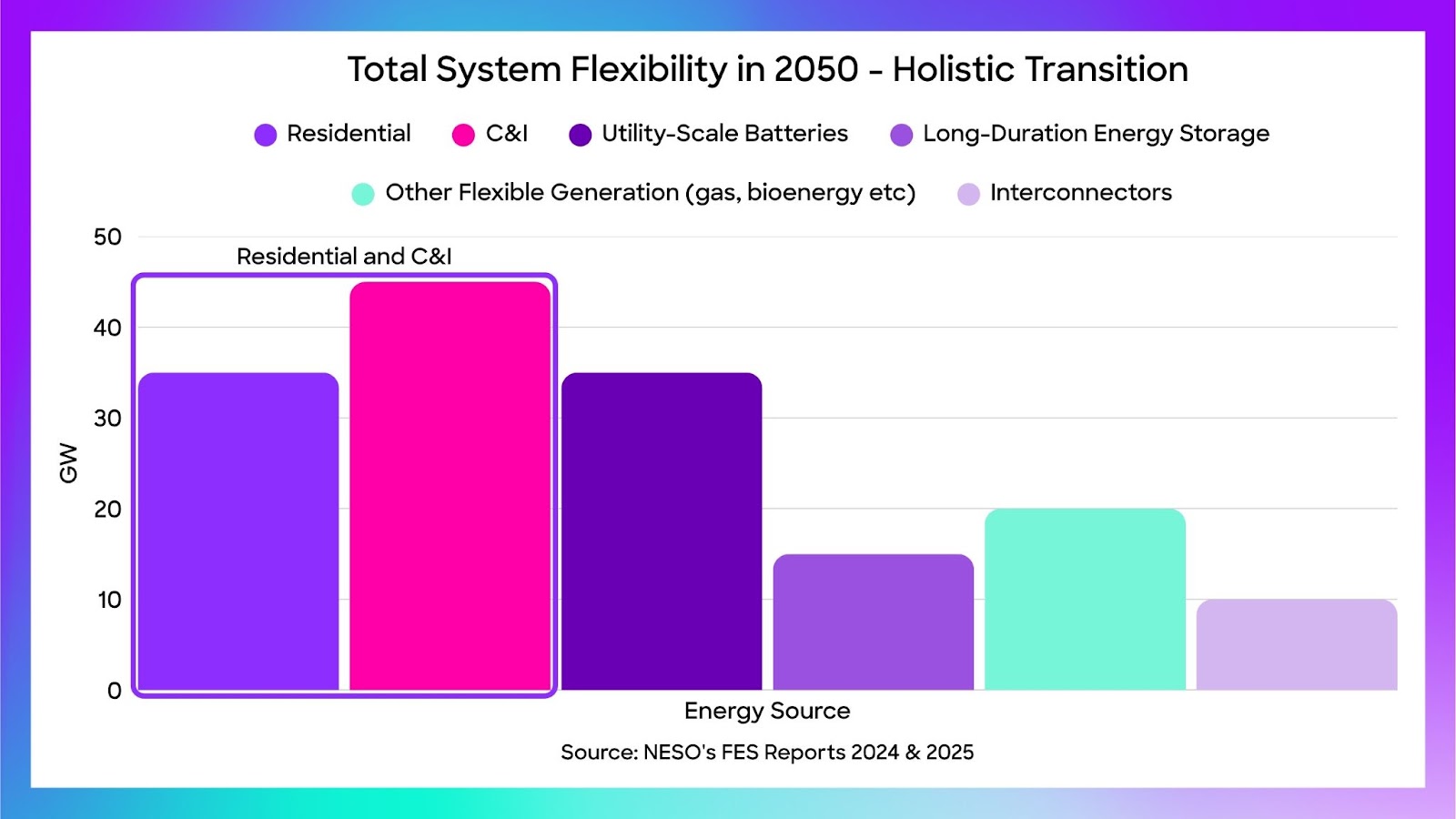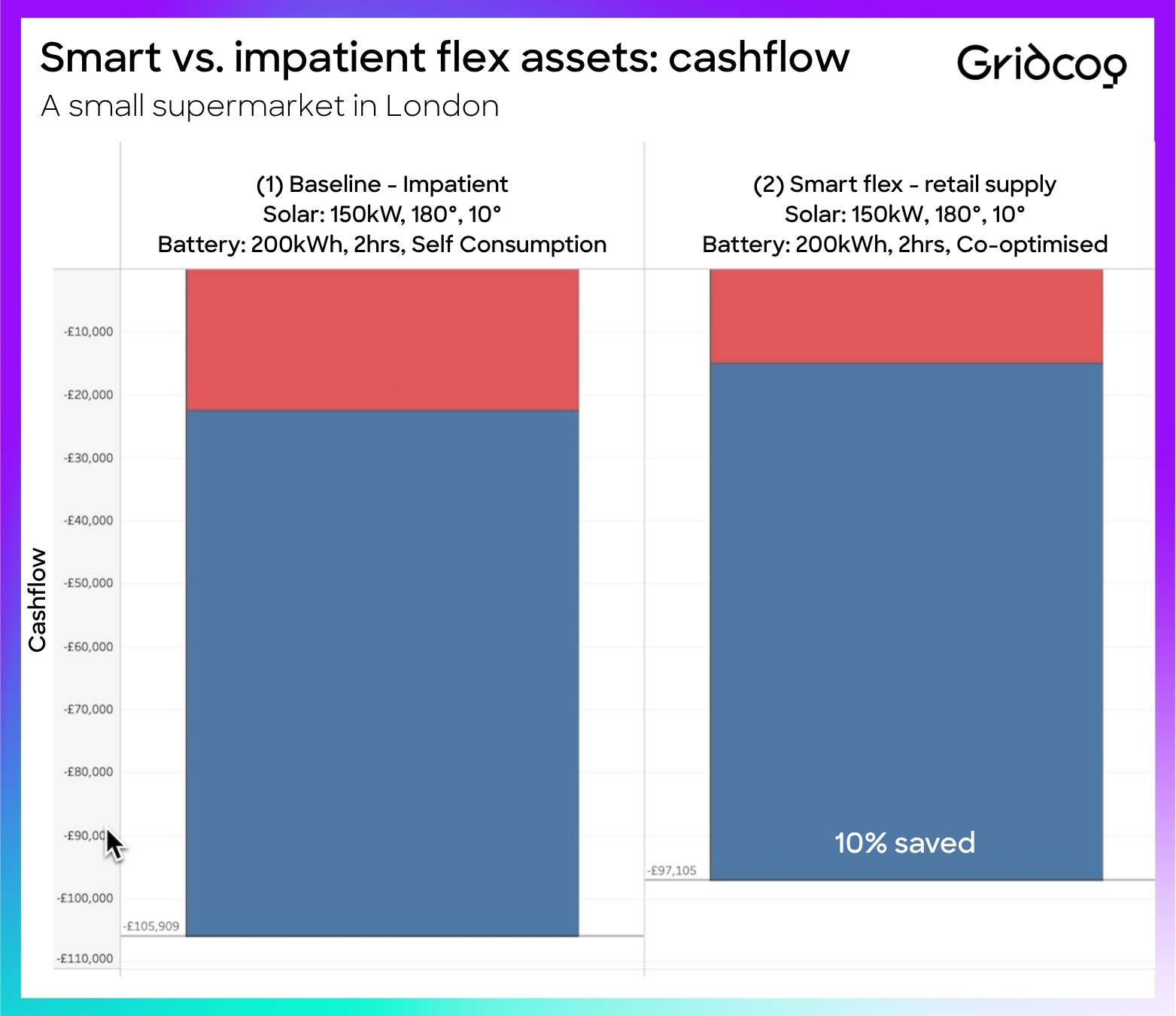Why smart flexibility is critical to a net zero grid: key insights from NESO’s Future Energy Scenarios 2025

National Grid ESO released their latest future energy scenarios on July 15th. This is a 170 page document and accompanying workbook covering different generation and demand pathways out until 2050 for the GB energy market.
Why flexibility matters in a net zero grid
This year the biggest takeaway was flex. We know that flex is critical as we transition to a net zero grid; it’s these flexible assets from battery storage, vehicles and demand side response that ensure we can keep the lights on when the sun isn’t shining and the wind isn’t blowing.
However, what is especially interesting in this year’s report is how much NESO’s flex predictions have increased compared to 2024 and how much of this is consumer led flex.
Key flex predictions from National Grid ESO’s FES 2025
In NESO’s Holistic Transition scenario they’re now predicting up to 40GW of utility scale battery storage by 2050, up 4GW from their 2024 projections.

(Comparison of 2024 and 2025 reports for their Holistic Transition Scenario)
While their forecast for V2G flex has increased by 28% to 41GW.

(Comparison of 2024 and 2025 reports)
Taking into account all sources of flex including interconnectors, according to NESO’s latest report almost 50% of the total system flexibility will come from residential and commercial consumers.

While flex is vital, not all flex is equal. If assets are controlled by overly simplistic Energy Management Systems or not exposed to dynamic tariffs or markets, then those assets aren’t creating as much value for the energy system (and in turn the asset owner) as they could be.
Smart flex in action: supermarket modelling case study
To illustrate this we ran a model in Gridcog comparing a small supermarket in London operating their flexible assets in different control modes and using different price signals.
Our supermarket has a number of energy assets onsite including battery storage, solar PV, flexible refrigeration and a small delivery truck fleet. In our baseline scenario these are all operating in simplistic control modes with our battery in self-consumption mode and our EV fleet charging at full power as soon as it gets back to the depot. The site is on a standard retail supply contract with a peak and off-peak rate and on a standard LV Site Specific Band 4 network tariff for UKPN London.
In our second scenario we’ve altered the control mode of our battery to be co-optimised and our EV fleet to start smart charging - here they’ll respond to price signals from the retail and network charges that the site is exposed to, seeking to reduce overall cost for the asset owner. The time of use element from the retail supply and network contract should reflect system scarcity, with peak pricing over the likes of winter evening peaks.
The financial impact of smarter asset control
When taking a look at the results of this model we can see radically different asset behaviour. To service the loads onsite in our baseline scenario the site has a maximum demand of almost 400kW. Whereas in our second scenario this falls dramatically to around 67kW. This is a response to the assets responding to off-peak price signals and peak demand network charges. This smart asset control potentially saves 300kW grid connection capacity which is massive in terms of cost, resource efficiency and speed.

Not only are our assets using less grid connection but we can see that the site’s demand is heavily concentrated overnight - a period of typically lower demand and cheaper retail and network costs. This again shows price signals and flex assets working to keep the whole energy system in balance.
Finally, we know flex assets can participate in many other energy, ancillary, reserve, balancing and capacity markets, but we kept things deliberately simple here. Even so, looking at our cashflow graphics, only altering the control mode of our battery and EV fleet saved our supermarket owner nearly 10% of their energy costs in one year.

NESO’s latest FES underscores how crucial flex is to achieve net zero. However, as we’ve explored in this piece, flex assets are only as good as their control mode and the price or market signals we provide them.
If you’re looking to reduce energy costs and unlock smarter value from flexible assets, talk to our team to request a demo of our Gridcog platform.



.jpg)

.jpg)
.jpg)
